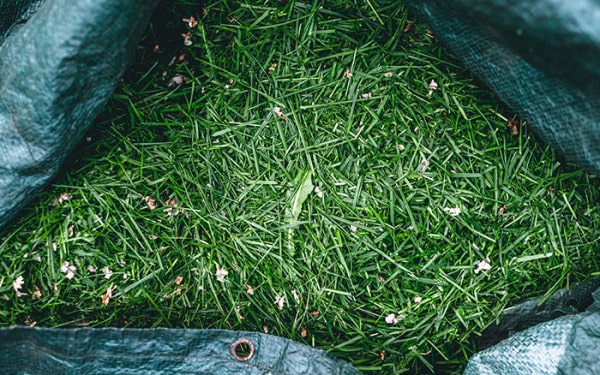When mowing the lawn through spring and summer, it may seem like you have a never-ending supply of grass clippings. But this is not a bad thing, because fortunately grass clippings have many uses in the garden.
Grass clippings are an incredible free resource. They are a valuable addition to compost heaps, good for mulching to retain moisture and suppress weeds, as well as being used to make fertiliser.
Mulching with grass clippings
Mulching is used to suppress weeds, aid moisture retention, and provide insulation to plants. With grass clippings, a layer of 2-3cm can be used as a mulch.
However, this may be slightly different if you experience problems with slugs in your garden. If this is the case, instead of using a thick layer, lightly sprinkle the grass clippings so the layer is just under 1cm thick. This layer may not suppress weeds, but it will help to retain moisture and supply organic matter as the grass breaks down.

How do grass clippings help with water efficiency?
Applying clippings helps to retain water. This therefore means that when it’s rained or watering the garden, it’s far more efficient. During long, dry spells, exposed compost can lead to water running off the surface rather than seeping down into the soil. This means the roots don’t get adequate water which can impact plants.
Therefore, by adding a layer of grass clippings as mulch, it acts as a buffer to catch the rainwater. Rather than running off the surface, it gives time for the water to get into the soil to the roots.

Composting with grass clippings
When adding grass to compost heaps many people may think they can lead to sludgy mixture. However, grass is a very useful bulk ingredient but take care to not add it all at once, otherwise you will have a sludgy consistency. Instead, add the clippings in layers which will balance out the mix and make the most of the nutrients on offer for a good compost at the end of the process.
At times, you may find you have more of one type of material and are short on the other. If you’ve got a lot of green materials like fruit and veg scraps, foliage, and flowers, you may need more brown materials to balance it out. In fact, grass clippings can be used as a brown material or carbon-rich material by letting them dry out. Do this by laying out a piece of cardboard in the greenhouse, conservatory or polytunnel and sprinkling the grass on the surface. In the sun, move the grass around regularly and the grass will dry out in the conditions and go from a green material to a carbon rich, brown material.

Liquid fertilisers
Grass clippings can be used to create food for the plants in liquid form. Do this by mixing grass clippings with water, at a ratio of 1:10 by weight. As a top tip, place the grass clippings into a pair of tights, so the liquid can be wrung out from the grass at the end of the process. Place the tights in a container and add the water. Once the water has been added, cover the top with a lid and leave for 3 days. After 3 days, compress the tights to drain out any excess liquid and use the liquid fertiliser as soon as possible.
Before using the liquid fertiliser on beds, borders, and containers it’s important to dilute the mixture so as to not harm the plants. The trick is to dilute the mixture until it is see-through or light in colour.
As with any fertiliser, don’t overuse it. Wait around 2 weeks before thinking of adding more, and the strength and frequency of the feed may differ depending on the individual plant. With this added nutrient enhancement, it’ll lead to healthier and more glorious flowers and foliage.


I use my grass clippings as a mulch in my borders,it really does help during the summer to keep the ground from drying+cracking.Along with lovely homemade compost I can keep my garden happy+not wilting in the hot weather.